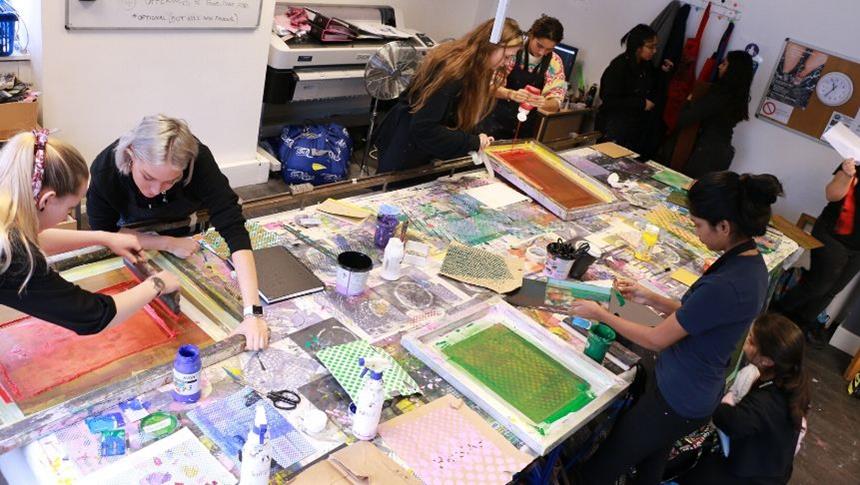Having a distinguished portfolio is crucial for anyone undertaking any arts, design or media course. Portfolios demonstrate your abilities to prospective employees and act as a physical or digital binder that holds samples of your work.
A fashion portfolio, for instance, can showcase your expertise in designing and sketching way more convincingly than through mere words. Moreover, they are an important part of the application process during which you will often be asked to showcase examples of your creative work. They serve as concrete evidence of your skills and also illustrate your passion and dedication to your chosen field.
It is therefore crucial that you devote plenty of time to creating a portfolio that does justice to your overall ability. Make sure that it looks well thought out and shows off your creativity. A lot rides on a portfolio so it should consist of your best work. To make this process easier, we’ve collected some useful guidelines for you to follow.
To start preparing an art foundation portfolio that effectively shows your creative thought process, you should first start by researching the portfolio requirements of the institutions you’re interested in. Make a list of art or design courses which you want to apply to and check their criteria such as portfolio size and format of work.
Some schools only accept finished pieces while others are keen to see your work-in-progress (unfinished) as well. Similarly, you might be required to take your original artwork to certain interviews while others will be happy with a digital submission. You should always check which format to use when referencing your work as well as making sure you know how to use the correct tools for online submission. International students also have to look into special rules such as submitting work through via post.
The second step should be to check out student portfolio examples to gain an understanding of what work is expected of you. These visual frameworks are a great source of guidance and can be viewed online or in campus libraries. Looking at a wide spectrum of portfolio styles can help you understand how submissions for each degree differs. Attending open days is also a great way to learn more about portfolio designs, admission processes and art schools in general.
Last, and most importantly, you should plan your portfolio art and design with the overall aim of exemplifying your skills, originality, experience and ideas. The primary purpose of a portfolio is to display visual examples of your work that best communicate your talent. Some important tips to consider are:
· Refrain from putting a busy background in your work as this can be distracting
· Go for quality rather than quantity and only show specific pieces
· Take professional photos of your work
· Use an overall creative theme to the art in order to make it more meaningful
· Make sure your portfolio is up-to-date and contains your latest artwork
· An appealing textile design portfolio adds value to the work
Creating an online portfolio is often the norm these days as employers prefer reviewing your work online. This can be in the form of a website or a showreel which can later be used for your job applications. There is a certain structure that your online work must adhere to. In addition to examples of your work, it must also have a home page, an about page and a contact page with relevant information.
When you are collecting work for an online portfolio, refrain from uploading everything at once. It’s better to stick to the most powerful pieces that are a true reflection of your skills. As time progresses, you can gradually grow your portfolio. It is also important to remember to display your work correctly by giving each piece a title with a proper description.
An online student portfolio is an effective way to catch the interest of prospective employers. You can link it to your CV, LinkedIn profile and other professional accounts as well as sending it to useful contacts. Look for relevant platforms where you can connect with alumni, other artists and companies. Share your online portfolio with them to build links and expand your network.
Whether you are creating a print portfolio or an online portfolio, you should enrol to the Foundation in art and design course by London College of Contemporary Arts (LCCA) to have your chance to show off your talent. The programme is specifically designed to help you hone your creative skills to help you pursue higher qualifications and boost your work prospects. Through this course, you can master the art of creating the best portfolio that aptly reflects your skills. Check out their courses for more information!
This article is written by Nandita Kaushal and edited by Amelia Hayward-Cole.

